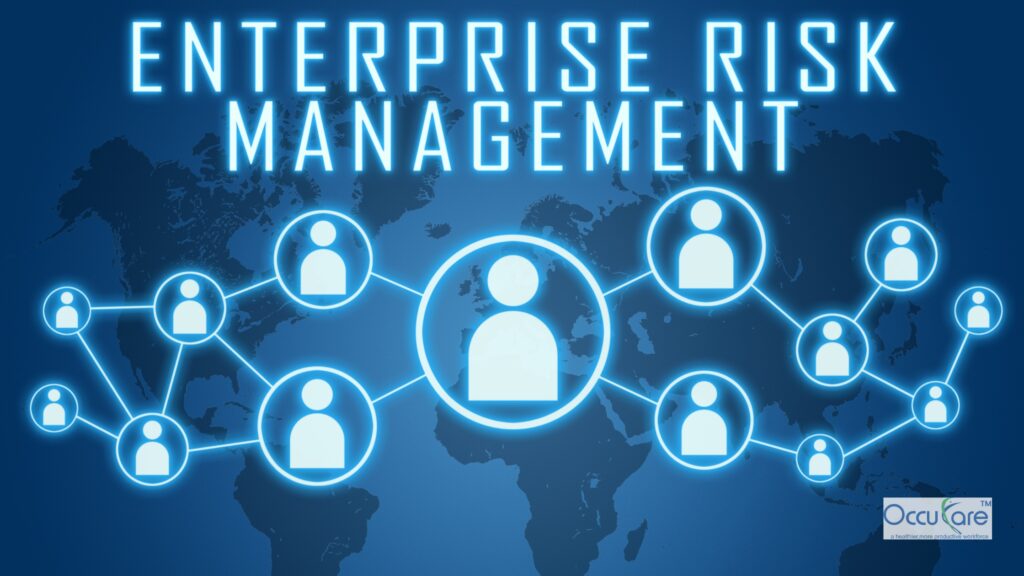
In today’s fast-paced business environment, risks emerge from every direction—cyberattacks, regulatory changes, supply chain disruptions, and even workplace safety incidents. Without a proactive approach to risk management, organizations face financial losses, reputational damage, and operational failures.
This is where Enterprise Risk Management Software comes into play. Unlike traditional risk management methods, modern ERM solutions leverage AI, automation, and real-time monitoring to detect and mitigate threats before they escalate.
But how exactly does ERM software work? And why should businesses integrate it with specialized tools like EHS Software, Workplace Safety Software, and employee health management systems for comprehensive protection?
In this blog, we’ll explore:
- The growing risks businesses face today
- How ERM software identifies and mitigates threats in real-time
- Key features to look for in an Enterprise Risk Management solution
- The role of Health & Safety Software and Electronic Health Record Software in risk management
- Real-world examples of ERM success
1. The Growing Risks Businesses Face in 2024
Every business, regardless of size or industry, faces risks. Some of the most pressing threats include:
A. Cybersecurity Threats
- Ransomware attacks increased by 93% in 2023 (Source: Sophos).
- Data breaches cost businesses an average of $4.45 million per incident (IBM).
B. Regulatory & Compliance Risks
- New data privacy laws (GDPR, CCPA) and industry-specific regulations require constant monitoring.
- Non-compliance can lead to hefty fines—up to 4% of global revenue under GDPR.
C. Operational & Supply Chain Disruptions
- Geopolitical conflicts, natural disasters, and supplier failures can halt production.
- 75% of companies experienced supply chain disruptions in the past year (Deloitte).
D. Workplace Safety & Health Risks
- OSHA penalties for safety violations can exceed $160,000 per incident.
- Poor employee health management leads to productivity losses and higher insurance costs.
“While Enterprise Risk Management Software provides broad risk coverage, integrating specialized tools like EHS software or workplace safety software ensures compliance and reduces physical workplace risks.”
2. How ERM Software Works in Real-Time
Traditional risk management relies on manual assessments and periodic audits—leaving gaps for threats to slip through. Modern Enterprise Risk Management Software, however, offers:
A. AI-Powered Risk Detection
- Uses machine learning to analyze historical data and predict emerging risks.
- Example: Detecting unusual financial transactions that may indicate fraud.
B. Automated Compliance Tracking
- Continuously monitors regulatory updates and flags compliance gaps.
- Reduces manual workload for legal and compliance teams.
C. Real-Time Alerts & Dashboards
- Provides executives with a centralized risk dashboard showing live threats.
- Sends instant alerts for critical risks (e.g., cybersecurity breaches).
D. Integration with Other Risk Tools
- Many Enterprise Risk Management Software platforms integrate with Electronic Health Record Software for healthcare firms.
- Manufacturers combine Enterprise Risk Management Software with health & safety software to track workplace incidents.
“For industries with high physical risks, ERM software paired with employee health management systems ensures workforce safety while maintaining compliance.”
3. Key Features to Look for in ERM Software
Not all ERM solutions are created equal. When evaluating options, prioritize:
| Feature | Why It Matters |
|---|---|
| Real-Time Monitoring | Detects threats as they emerge, not after damage occurs. |
| AI & Predictive Analytics | Identifies patterns to forecast risks before they happen. |
| Compliance Automation | Keeps up with changing regulations (GDPR, OSHA, SOX). |
| Third-Party Integrations | Works with EHS software, ERP, and cybersecurity tools. |
| Customizable Reporting | Generates executive-ready risk reports for stakeholders. |
4. Real-World Success Stories
Case Study 1: Manufacturing Firm Reduces Compliance Fines by 60%
- A global manufacturer integrated ERM software with workplace safety software to automate OSHA compliance.
- Result: 60% fewer fines and a 40% drop in workplace incidents within a year.
Case Study 2: Healthcare Provider Prevents Data Breaches
- A hospital network used ERM + EHR software to monitor patient data access.
- Result: Zero breaches in 18 months, saving $2M+ in potential penalties.
5. The Future of ERM: AI, IoT, and Predictive Risk Management
- AI-Driven ERM: Future systems will predict risks with 90%+ accuracy using deep learning.
- IoT Integration: Sensors in factories and offices will feed real-time data into ERM platforms.
- Unified Risk Platforms: Expect more ERM tools to bundle EHS software, employee health tracking, and cybersecurity into one system.
Conclusion: Is Your Business Protected?
Risks are inevitable—but losses aren’t. ERM software provides the real-time visibility and automation needed to stay ahead of threats.
Next Steps:
✅ Assess your biggest risks (cyber, compliance, safety).
✅ Compare ERM solutions with key features like AI and compliance tracking.
✅ Consider integrating specialized tools like health & safety software for full coverage.